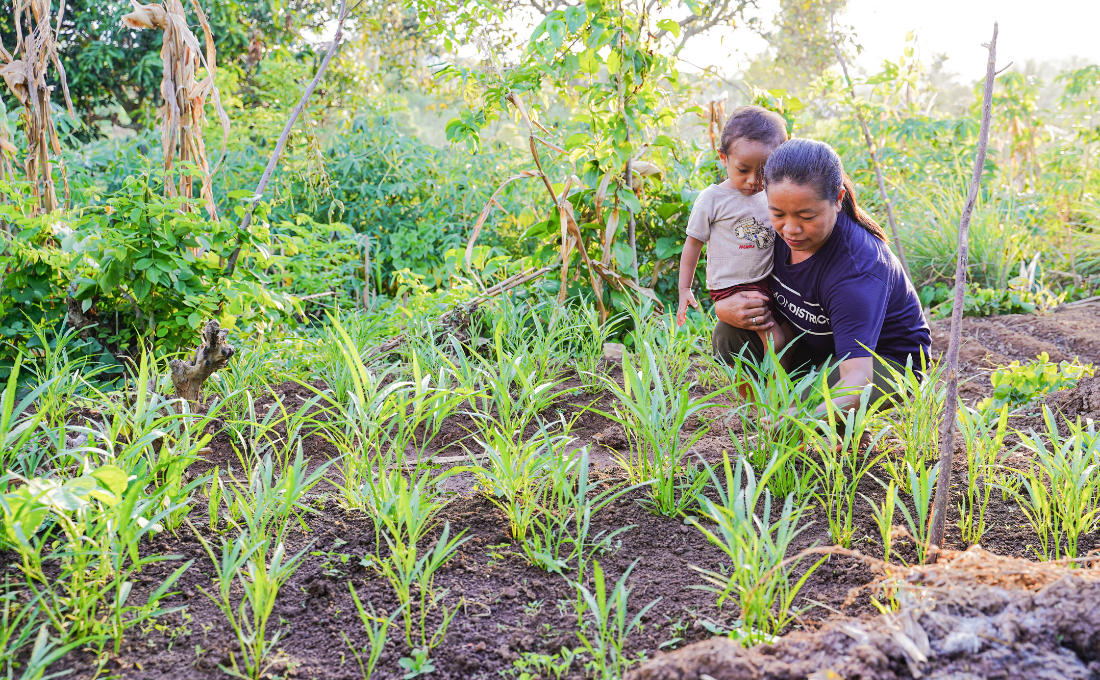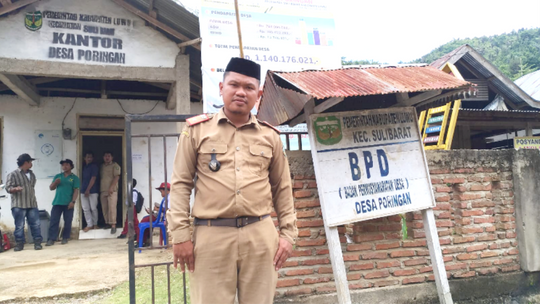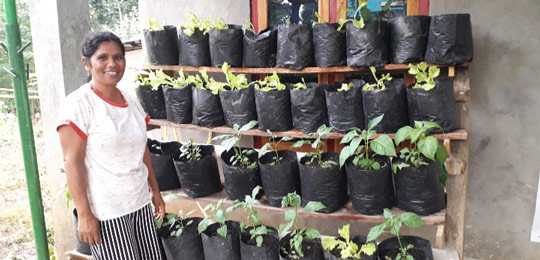Small Patch that Matters for Food Security

Two small hydroponic gardens, about 1x2 m each, were seen in front of a small church in the middle of a quiet and remote village in Sintang Regency, West Kalimantan. From the looks, the gardens look plain, without the sophisticated hi-tech equipment. One can see that those setups are only meant to provide food for a small family.
A group of mothers from the village guided me to those gardens while describing and discussing what they have accomplished. Amazingly, they have successfully processed the vegetables harvested from the small garden into delicious meals for their family to enjoy, such as veggie noodles. More than that, they managed to generate money from selling the remaining harvest from those two plain setups.
Those mothers are farming specialists. Farming is what they have done since childhood. They are experts at knowing the best season to plant and what suitable crops should be planted. They roamed the forest to collect edible plants and tapped rubber in the woods; nonetheless, this simple hydroponic home garden introduced to them has touched and shifted many aspects in their life.
After they build the home garden, they are able to serve food to their family during rainy days. Before, rainy days meant no access to vegetables in the village. The home garden also provides the freshest vegetables, unlike those brought in by the local vendors. Now they can eat healthier too since the veggies use no insecticides nor fungicides. The small patch of yard brings generous goodness for the family.
Food Security Frontier at The Back Yard
With appropriate treatment, a small home garden could contribute to fighting food insecurity in remote or modern areas in Indonesia. The pandemic saw a surge in home gardening, but as life returned to its usual pace, this vital and rewarding activity has taken a backseat to newer ones. Though, this activity or movement is a solid example of resiliency built right from the home yard.
Research has documented the practice of home gardening as the unsung heroes*. It is a widespread practice in Southeast Asia but due to industrialisation, its operation has been swung more to commercialisation. It is supposed to host multiple crops to complement household daily consumption. Instead of monoculture, permaculture approach as well as simple intercropping will be more suitable. These approaches will serve the purpose of a home garden: diversity of food for every family.
Imagine if we only can eat one type of vegetable for a long time. Would we enjoy it? How can we fulfill our nutrient needs? What will happen to our children’s growth and development?
A home garden is very adaptable to any environment. Some creativity is needed but it is worth the effort. For instance, turning a cramped balcony of an apartment into a productive hanging garden. It is not only a fresh sight to the eyes, but it will provide food – healthy, cheap, and fresh.
Maybe this is mother nature’s sign for you to start transforming the home yard into a home garden. Here are the three important reasons to start a home garden now.
-
Fresh, Organic Produce:
-
Homegrown vegetables are often fresher and more nutritious than store-bought produce.
-
Growing your own food can help you avoid harmful pesticides and chemicals.
-
Cost Savings:
-
Gardening can be a cost-effective way to supplement your family's food supply.
-
Over time, you can reduce your grocery bills by growing your own fruits and vegetables.
-
Environmental Benefits:
-
Home gardens can help improve the environment by reducing food miles and carbon emissions.
-
Gardening can also promote biodiversity and attract beneficial insects to your yard.
*Source: https://worldagroforestry.org/blog/2022/04/28/reinventing-homegarden-research-viet-nam-sets-resilient-future?utm_source=site-search&utm_medium=cifor-icraf-website&utm_campaign=traffic-source
Author: Rusmi Wiyati (Food Security and Livelihood Specialist)



